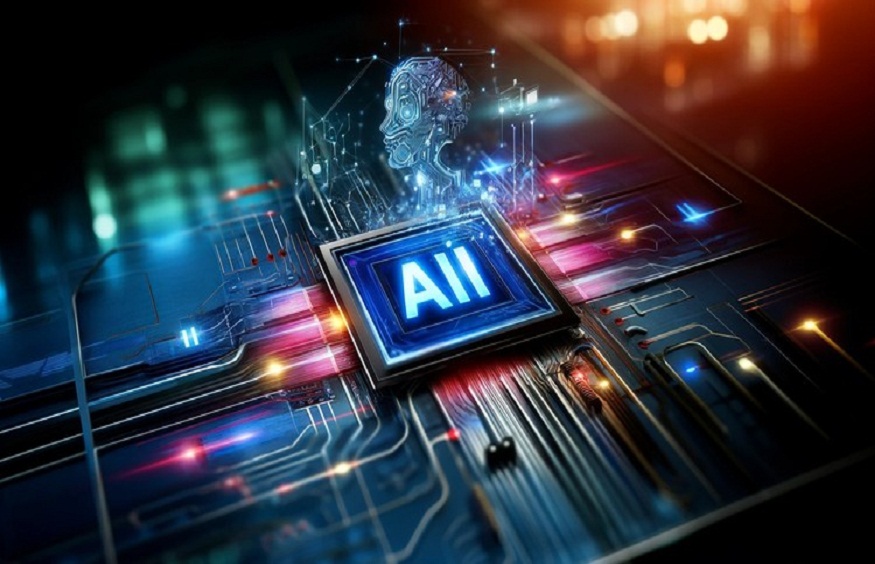Essentially, the unseen backbone for countless apparatuses of ordinary use, printed circuit boards abbreviated as PCBs are the hidden gem of today’s technology. PCBs play an important role in interconnecting and supporting various electronic parts installed in devices ranging from laptops and mobile phones to appliances of industrial and medical facilities. The complexity of PCB designs has grown dramatically as technology continues to advance at a breakneck rate, posing new difficulties for semiconductor leaders and hardware design companies.
PCB design has always incurred a lot of manhours hence requires specialized engineers to conceptualize, plan, and execute the design process. However, with advancements in Artificial intelligence (AI) in the realm of the PCB design process, things are changing at a fairly fast rate. With its unparalleled levels of automation, optimization, and efficiency, this ground-breaking method is completely changing the industry.
The AI Requirement for PCB Design
PCB designs are under increased pressure as electronic gadgets get smaller and more powerful. In addition to managing intricate signal integrity problems, accommodating increasing component densities, and meeting demanding performance standards, modern PCB boards also have to adhere to tight schedules and cost limitations. Innovative solutions are now required since these problems have pushed the boundaries of established design approaches.
Now for AI-powered PCB design. AI can help engineers with every step of the PCB design process, from initial concept to final production, by utilizing machine learning algorithms and extensive data analytics. This potent technology allows designers to produce more complex and effective PCB layouts faster—it is not intended to take the place of human skill.
Principal Advantages of AI-Powered PCB Design
Hardware design firms and leading semiconductor manufacturers can benefit greatly from the incorporation of AI into PCB design. Let us examine a few of the principal advantages:
Optimized PCB layouts that may not be immediately obvious to human designers are the result of enhanced design optimization, which is made possible by AI algorithms’ ability to evaluate enormous volumes of data and innumerable design factors at once. As a result, there may be improvements in heat management, less electromagnetic interference, and signal integrity.
Accelerated Design Process: AI may greatly accelerate the PCB design process by automating time-consuming operations like component placement and routing. It helps hardware design firms keep ahead of the competition and launch products more quickly.
Decreased Mistakes and Rework: AI-driven design instruments can spot possible problems early on, such rule rule-breaking or inconsistent design. By taking a proactive stance, mistakes are reduced and less expensive rework is required later on in the development cycle.
Cost Savings: Artificial Intelligence (AI) can assist cut production costs by minimizing material waste and improving component placement. Hardware design firms may also save a substantial amount of time and money as a result of the enhanced process efficiency.
Tools Driven by AI are Transforming PCB Design
The PCB design business is seeing a rise in the use of AI-powered tools and methodologies.
Automated Assembly of Components
Component placement is one of the longest and most laborious parts of PCB design. To recommend the best locations for components, AI algorithms might examine design specifications, component histories, and component requirements. These recommendations consider things like manufacturing restrictions, signal integrity, and heat management.
Hardware design organizations can achieve better outcomes and save a significant amount of time by automating this procedure instead of placing components by hand. Additionally, the AI may learn from earlier ideas and keep refining its suggestions, which will eventually result in layouts that are even more efficient.
Astute Routing
Another difficult activity that can be considerably aided by AI is routing traces between components on a PCB board. Design guidelines, signal integrity specifications, and board limitations can all be analyzed by machine learning algorithms to produce the best routing options. These AI-powered routing tools can minimize crosstalk, maintain appropriate impedance management, and negotiate intricate multi-layer systems.
AI is also capable of making real-time routing modifications when components are added or relocated, preserving design integrity during the iterative process. Increased flexibility and efficiency in the design workflow are made possible by this dynamic approach.
Power Integrity and Predictive Signal Analysis
For PCB boards to operate well and be reliable, adequate signal and power integrity must be guaranteed. Before actual prototyping, AI-powered analysis tools may model and anticipate possible problems, saving hardware design company time and money.
With the help of enormous databases of prior designs and performance data from actual use, these technologies employ machine learning algorithms. Artificial Intelligence can precisely forecast signal integrity problems like crosstalk, reflections, and electromagnetic interference by examining elements like trace geometry, layer stackup, and component properties. It enables designers to optimize early in the design process and make well-informed judgments.
Optimizing Thermal Management
Effective heat management becomes more essential as PCB boards get denserly packed with components. To improve PCB thermal design, AI algorithms can examine component heat dissipation, board composition, and airflow patterns.
AI can recommend configurations that reduce hot spots and guarantee effective heat distribution throughout by modeling a range of conditions and component placements. The dependability and performance of the finished product can be greatly enhanced by this proactive approach to heat management.
Support for Design for Manufacturing (DFM)
AI has a significant impact on making sure PCB designs are manufactured as efficiently as possible. AI-powered DFM tools can direct designers toward decisions that increase yield and lower production costs by incorporating knowledge of tolerances, manufacturing processes, and best practices.
These technologies may estimate manufacturing costs based on design decisions, automatically verify designs against manufacturing guidelines, and recommend changes to increase producibility. It helps close the gap between design and production.
AI’s Potential in PCB Design
They may anticipate even more cutting-edge uses for AI in PCB design as the field develops. Among the intriguing prospects that lie ahead are:
Interfaces for Natural Language Processing (NLP): In the future, there may be design tools that incorporate NLP and designers may input their requirements in a natural language where the AI will produce the specifications for the design.
Conclusion:
To the electronics industry, AI-driven PCB design is a colossal step forward for the electronics industry. Through AI, hardware design businesses and semiconductor leader can create more complex and efficient PCB boards in a shorter time because of complex procedures, optimized design, and useful data.
As a result, it can be stated that the role of AI in PCB design is still evolving and as the technologies progress, it would be safer. There are many of them, starting with generative design to advanced integration into production – it is very interesting. However it is important here to note that artificial intelligence is not a tool or means to replace human learning; rather, it is an addition to it. The most effective use of AI in PCB design will be when AI tools are most harmonised with AI and the creativity and experience of the designers.










